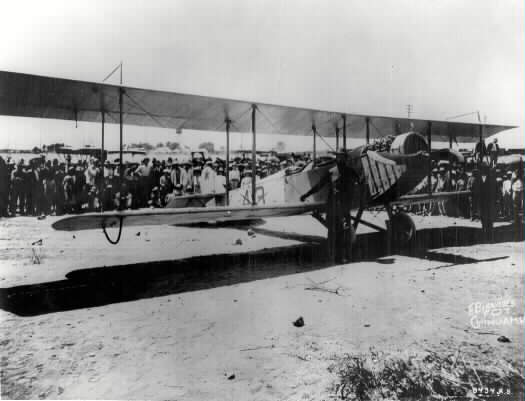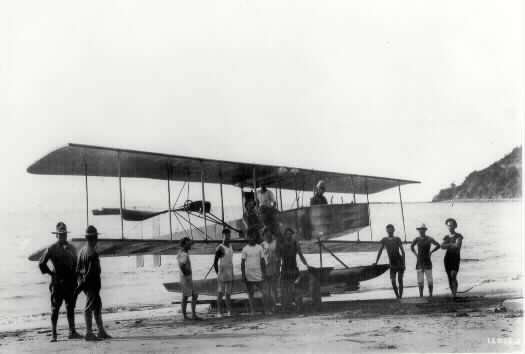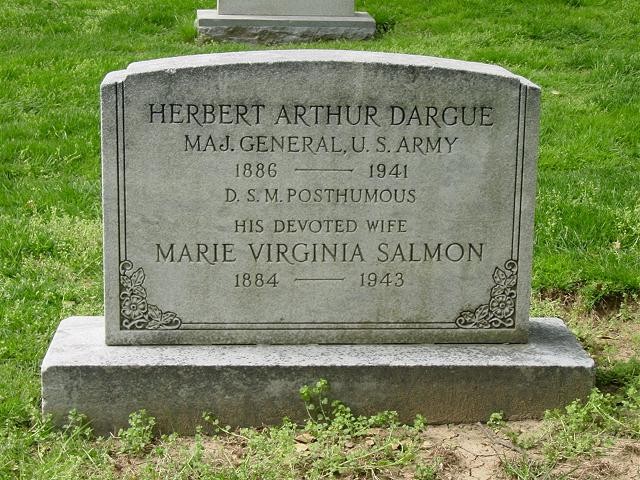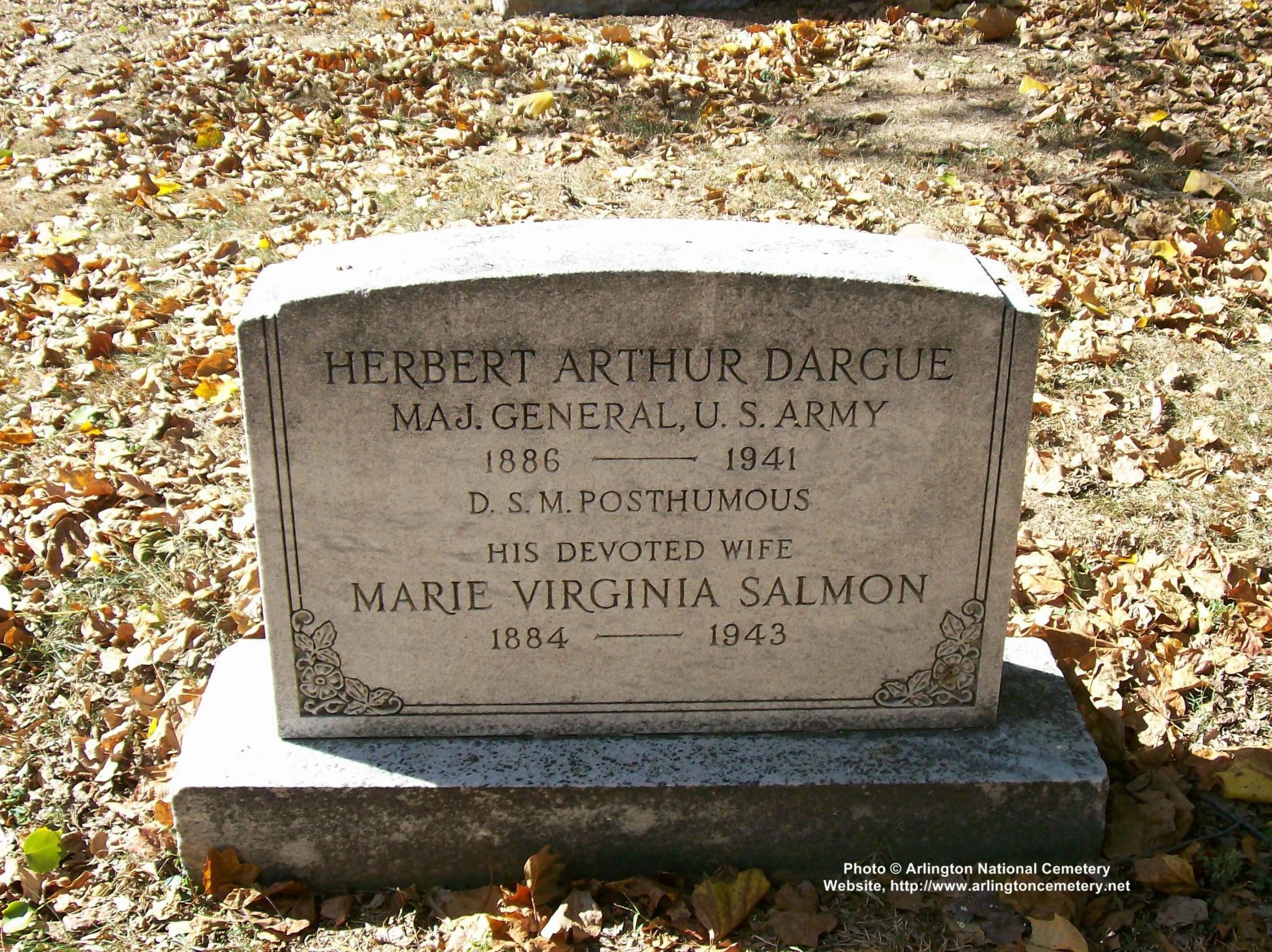Born in 1886, he graduated from West Point in 1911. He served in the Mexican Punitive Expedition and in World War I, as Commander of the 1st Aero Squadron.
He was Assistant Chief of the Army Air Service and commanding general of the 1st Air Force when he was killed in an aircraft accident in California on December 12, 1941. He was awarded posthumousely the Distinguished Service Medal. He was buried in Section 7 of Arlington National Cemetery.
His wife, Marie Virginia Salmon Darque (1884-1943), is buried with him.
Courtesy of the National Aviation Hall of Fame
DARGUE, HERBERT ARTHUR – 1886-1941
Herbert Arthur “Bert” Dargue was born in Brooklyn, New York on November 17, 1886. After high school he worked briefly as an educator before deciding to become a soldier. He entered the U.S. Military Academy in 1907 and graduated in 1911. After a short tour in the U.S. he was posted to the Philippines. While there, he volunteered for service with the Aviation Section of the Signal Corps. In July of 1913, he completed flight training and received his wings.
On December 16, 1914, Dargue (as pilot) and Lt. J.O. Mauborgne (as wireless operator) became the first Army airmen to transmit and receive radio messages while in flight. Soon after, he was transferred to the Signal Corps Aviation School at North Island, San Diego where he reported for aircraft testing and instruction duty in March of 1915. He remained there until his transfer in December to the 1st Aero Squadron at San Antonio.
The primary mission of the First Aero Squadron was surveillance, from their Curtiss JN-2 Jennys, of the U.S.-Mexico border for smugglers, armed incursions and other violations. In 1916, the Squadron was detailed to Brigadier General John Pershing’s command to furnish air support and reconnaissance for the expedition to pursue Pancho Villa into Mexico. Dargue was the first Army pilot to make an operational flight across the border during this campaign. In early April, Dargue was fired upon at Chihuahua City where he landed with dispatches from the U.S. Consul. On another occasion, Dargue barely escaped an angry mob that surrounded him and tried to destroy his plane. On April 15, he set a flight distance record on a long-range reconnaissance mission of 415 miles with only two stops.
Later, Dargue returned to the Signal Corps Aviation School at San Diego. Here, in July of 1917, he and another pilot made the first planned Army night flight and landing. In September of that year, he helped establish, and later commanded, the School for Aerial Observation at Fort Sill, Oklahoma. Dargue went to France in August of 1918 as inspector and observer of U.S. air training and combat units.
In the early 1920’s, Dargue became an associate of Billy Mitchell and tried to persuade him that he would accomplish more for American aviation by working within the establishment than against it. Dargue and Hap Arnold were strong proponents of a separate Air Force, coordinated and coequal with the Army and Navy.
In 1926, an experienced flying leader was needed to command the record-making Pan-American Good Will Flight. This entailed the first aerial circumnavigation of South America and the risk of flying almost 21,000 uncharted miles. Dargue was chosen as Commanding Officer of a squadron of five Loening amphibians to make the flight. The planes were named after American cities chosen by their crew. Dargue and Lieutenant E.C. Whitehead flew in the “New York.” Dargue experienced a close brush with death in a mid-air collision over Buenos Aires which took the lives of the two pilots of the Detroit and demolished the New York. Dargue and the other pilots completed the mission and returned to Washington, D.C. on May 2, 1927. There, President Coolidge awarded Dargue and the other members of the Pan-American flight the first Distinguished Flying Crosses. Only one aircraft survives of the five, the “San Francisco”, which currently resides at the U.S. Air Force Museum.
Dargue spent the waning years of the 1920’s continuing his military education, graduating from both the Navy and Army War Colleges. In 1930, he was assigned as commanding officer of the 2nd Bombardment Group at Langley Field, Virginia where he served until 1934. When he flew as group commander at Langley, he chose the top rear gunner’s cockpit in one of the group’s Keystone Bombers as his command position where he could control the group’s formations by hand signals from an open cockpit.
In 1934, he became Assistant Commandant of the Air Corps Tactical School at Maxwell Field, Alabama. While there, he worked closely with the Norden Company, helping to develop and test what would become the Norden Bombsight. In 1938, he was assigned to the 19th Wing at Albrook Field, Canal Zone. While there, he was promoted to Brigadier General. The 19th included several bomber squadrons which Dargue led on a number of goodwill flights in Central and South America.
In the latter part of 1941, Dargue, by then a Major General, took command of the First Air Force at Mitchel Field. Upon assuming this post, he placed all bombardment and pursuit units under his command on a 24 hour full combat alert. A few weeks later, Pearl Harbor was attacked. Dargue was chosen by Secretary of War Stimson to proceed to Hawaii to head up an investigation of the lack of preparedness at Pearl Harbor and to take command of Army units there. En route, the B-18 Dargue was piloting crashed in the Sierra Nevada mountains near Bishop, California, killing all aboard on December 12, 1941. For his life-long service and devotion to aviation, Dargue received the Distinguished Service Medal posthumously.
For exceptional contributions to American airpower and Army aviation, and to the eventual establishment of an independent Air Force, as well as his skill as both pilot and problem solver, Herbert A. Dargue is enshrined with pride and honor into the National Aviation Hall of Fame.
NOTE: His son, Donald Salmon Dargue, Lieutenant Colonel, United States Air Force, is also buried in Arlington National Cemetery.


Michael Robert Patterson was born in Arlington and is the son of a former officer of the US Army. So it was no wonder that sooner or later his interests drew him to American history and especially to American military history. Many of his articles can be found on renowned portals like the New York Times, Washingtonpost or Wikipedia.
Reviewed by: Michael Howard


